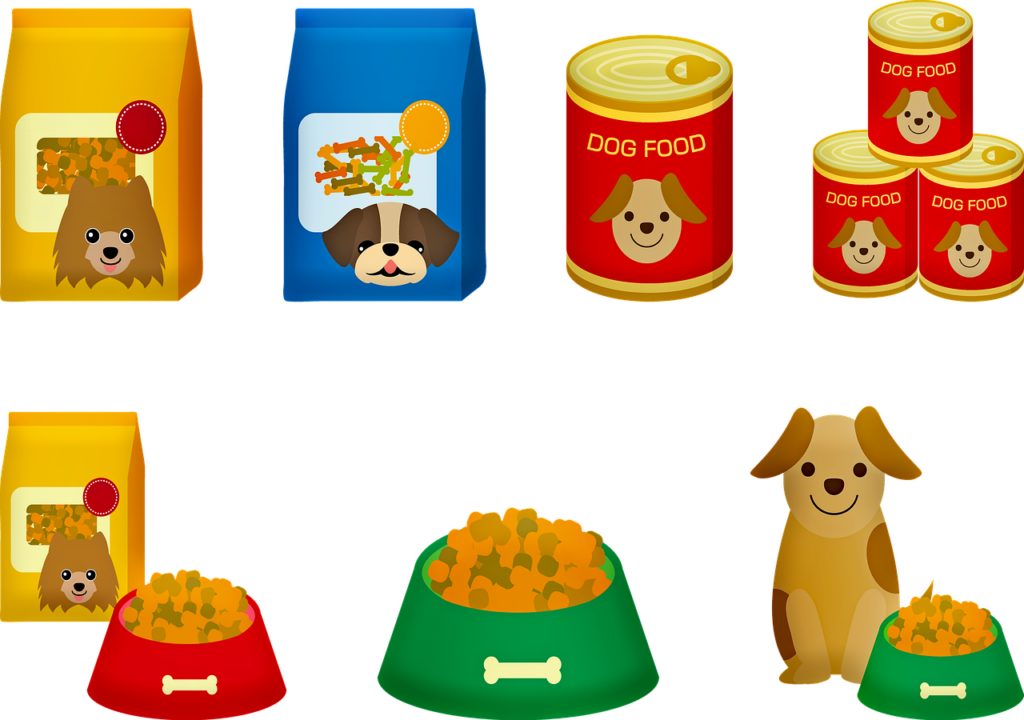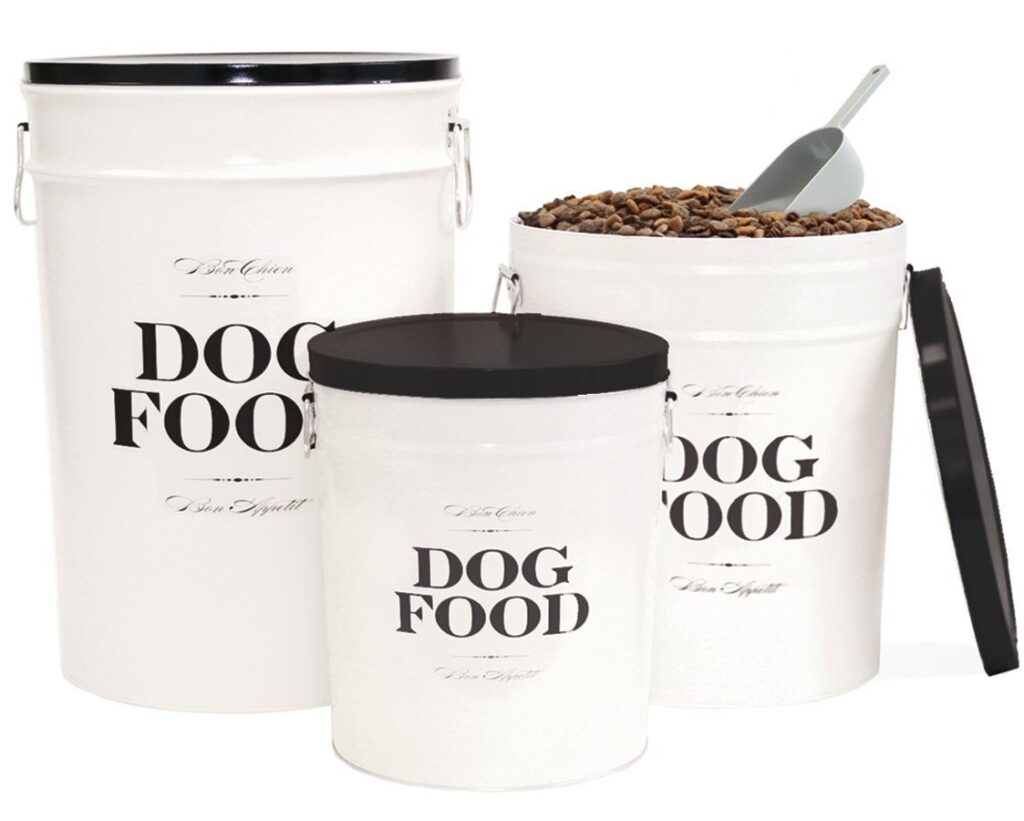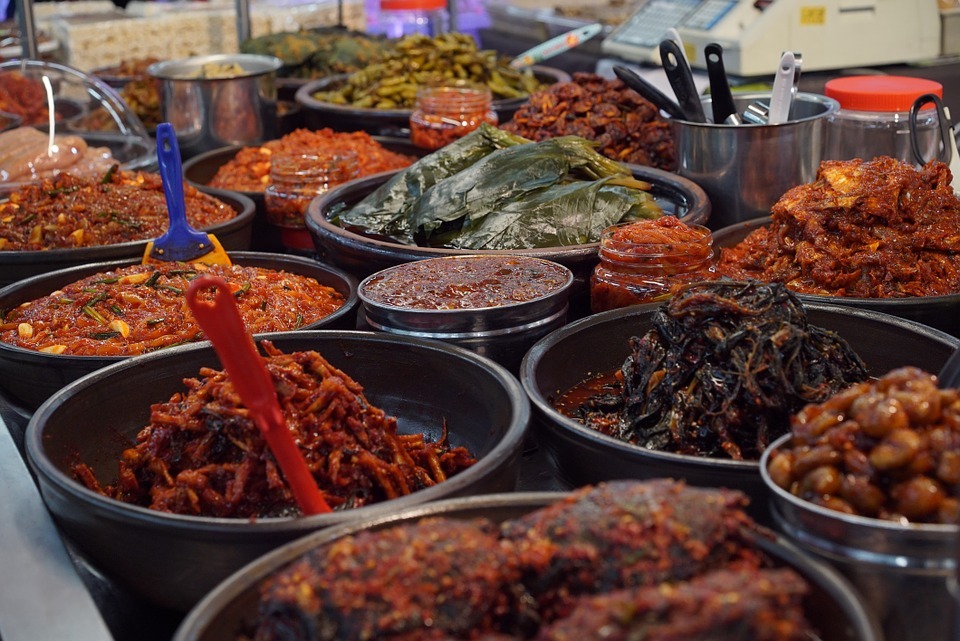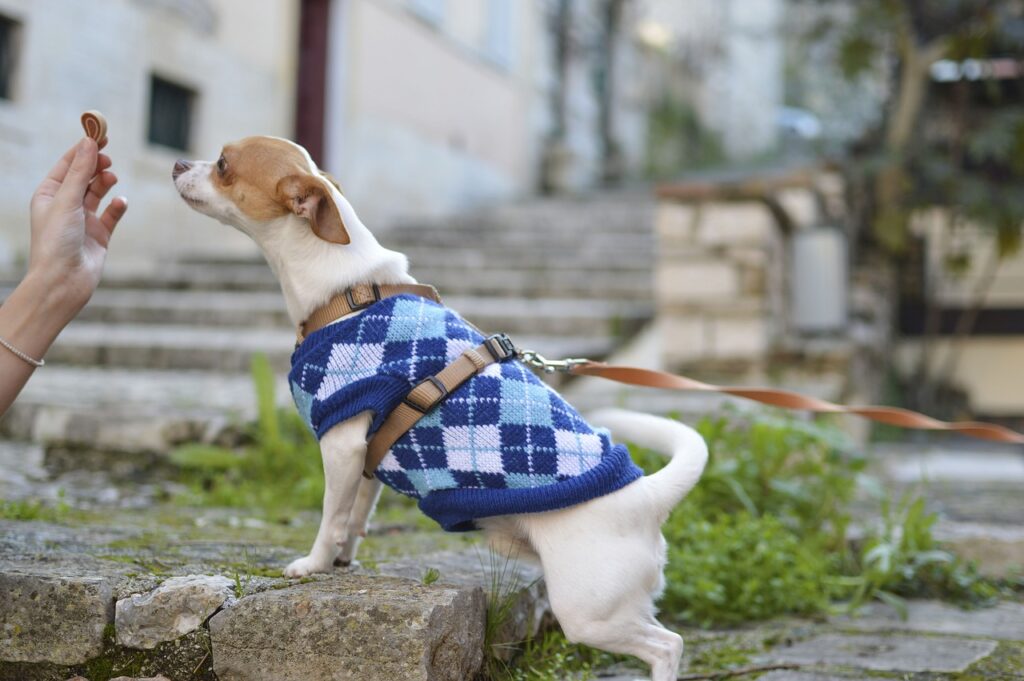When it comes to giving dry food to dogs, most pet owners only worry about the safety of the food and the ingredients used to make the food. Very few pay attention to how to store the food. However, like human food, dog food changes in taste, texture, and color when exposed to moisture and extreme temperatures. If you don’t store your dry dog food properly, therefore, it may degrade and turn rancid fast, exposing your dog to a wide range of health conditions. To ensure that your dry dog food remains fresh for long and offers optimum nutritional value to your pup, we will highlight everything you need to know about storing dry dog food in the long term.
- How to Store Dry Dog
Food Long Term: Our Top 17 Tips
- 1.Store The Food In Its Original Container
- 2. Always seal your storage bag
- 3. Use within a maximum of 6 weeks after opening
- 4. Always use airtight containers
- 5. Avoid pouring dog directly into storage containers
- 6. You may freeze some dog foods
- 7. Thoroughly inspect the storage container before using it
- 8. Maintain your dog’s food flavor by going for glass
- 9. Keep your pet food storage containers clean
- 10. Store indoors in cool, dry places
- 11. Store dog food in multiple Containers
- 12. Only store or leave small amounts of treats in food dispensers
- 13. Never mix old and new dry food
- 14. Never allow children to help you store dog food
- 15. Ward off ants with clove oil
- 16. Avoid buying Dry Dog food from open food bins
- 17. Avoid using artificial preservatives
- DIY Dog Food Storage Container Ideas
- Related Questions
- Conclusion
How to Store Dry Dog Food Long Term: Our Top 17 Tips
1.Store The Food In Its Original Container
Always store your dog food in its original container, and once you open it, remember to fold and clip it, and put it in airtight storage containers. Here are the benefits of storing dry dog food in its original container:
- Some plastic containers are made of poor quality plastics, which can collect oil from the dog food, making it rancid over time.
- Most dog food companies use high-end packaging bags, including oxygen barrier bags that are designed to lock out moisture and oxygen.
- The original container has important information that you may need to keep your dog food fresh, including, UPC codes, lot number, expiry dates. The details can also come in handy when you have a problem with the food or in the event of dog food recalls.
a). Dry-Packs 5 Gallon Mylar Bag
b). ShieldPro 5 Zip Seal Mylar Bag
c). FreshUS 2000cc Oxygen Absorber
2. Always seal your storage bag
Seal any dog food bag or container after every feeding to prevent exposure to humidity and oxygen, top elements that speed the rate of food degradation. Unsealed food bags are also prone to bacterial contamination. To seal your bag, roll down the sides or use clips like Ikea Bevara Sealing Clips to close up the bag.
3. Use within a maximum of 6 weeks after opening

Like human food, dry dog foods also have expiration or ‘sell by’ dates on them. You should note that this date only applies to a sealed bag. After you’ve opened the food bag, the expiry is date becomes invalid and the food has a shelf-life of a maximum of 6 weeks. After 6 weeks, the nutritional value of the food will be lower than when you first opened the bag. To easily track the expiry date, consider marking the date when you opened the bag with a marker pen and discard the remaining food after 6 weeks.
4. Always use airtight containers
Any container that you use for storing dry dog food should be airtight to protect the food from oxidation so that it can maintain its fresh taste. It also prevents pests from infiltrating your dog food.
a). IRIS 3- Piece Airtight Pet Food Container
b). Gamma2 Vault Outback Airtight Pet Food Container
c). Van Ness Pet Food Container
5. Avoid pouring dog directly into storage containers
Do you like emptying your dog food in containers for more comfortable feeding? Well, you should know that there are a few risks associated with the practice:
- Plastic containers may contain chemicals that can easily seep into your dog food
- You are increasing the risk of storage mites and mold growth, which can cause food poisoning in dogs. Mold mites such as Tyrophagus Putrescentiae are very hard to notice unless there is a massive infestation.
- Residual oils and fats from the dog food can settle at the sides and bottom of the container, contaminating the food and making it rancid.
6. You may freeze some dog foods
When you have more dry food than your dog can consume before it expires, you may freeze it for up to a period of 6 months. To ensure that it maintains its flavor, ensure that you double wrap it in a freezer-safe bag or container.
However, you should note that freezing can add moisture to your dog food. So, strive to use kitchen vacuum sealers to prevent potential moisture exposures. Alternatively, use zip lock bags to store small batches of your dog food and only take out small portions to last your pooch for a few days.
a). FoodSaver FSFRSH0051-000 111
b). Anova Precision Vacuum Sealer
c). Weston Pro-2300 Commercial Grade Vacuum Sealer
7. Thoroughly inspect the storage container before using it

Always check your dog food storage container for dents, punctures, and awkward swellings. There are high chances that foods in containers with these defects are spoilt or contaminated with botulism, a deadly toxin to dogs and humans. Most importantly, discard such containers immediately you detect the defects. To be safer, wrap them in plastics before discarding them. And after handing such cans, don’t forget to wash your hands using a sanitizer. Alternatively, use disposable gloves to handle the containers.
8. Maintain your dog’s food flavor by going for glass
Glass and metal containers are better than most plastics when it comes to storing dog food. This because some plastics (especially those that are not manufactured solely for pet food storage) can impart undesirable smells and flavor on your dog food. Plastics can also scratch or form small nicks and dents, which can harbor bacteria, contaminating your dog food. Go for glass containers with rubber gaskets on the lid to keep moisture and air out of your dog food.
a). Anchor Hocking Glass Jar with Seal Lid
b). Anchor Hocking Candy Glass Jar with Lid
c). Greener Chef Glass Food Storage Containers with Bamboo Lids
9. Keep your pet food storage containers clean
Don’t be tempted to simply top off your storage container with a new bag of dry dog food. Strive to wash your storage container between refills to limit the chances of carrying rancid oil from the old container, contaminating your fresh food. Whether you have plastic or metal container, wash with warm or hot, soapy water and white vinegar then allow it to dry before refilling it. Remember that excess moisture in your storage containers can cause mold and mildew growth on your dog food.
10. Store indoors in cool, dry places

Avoid storing your dog food outdoors due to temperature fluctuations and to protect the food from rodents, insects, and pests. The best place to store dry dog food is indoors—in cool, dry places that are free from moisture and high temperatures. High temperatures and moisture can speed up the food degradation process and cause the nutrients within dry dog food to breakdown. In addition, ensure that the place you choose to store the foods can’t be easily accessed by your pooch to prevent him from sneaking a snack.
Related: 12 Easy Tips to Stop Your Dog from Stealing Food off the Counter
11. Store dog food in multiple Containers
Consider storing your dog foods in multiple locations. Instead of using one big container to store a large quantity of kibble, use the container to hold several smaller bags of different food brands. Smaller portions are not only convenient to use but also saves you from the hassle of unsealing more than you need. Additionally, in case one container is contaminated, you are still left with fresh food for your pooch elsewhere.
a). simplehuman 35 Liter Large Pet Food Storage Can
b). Buddeez Large Fresh Dry Dog Food Storage Container
c). OXO Food Storage Container
For even smarter storage solution, you can invest in dog food storage cabinet that includes food storage space and inbuilt feeding bowls like Solid Pine Country Feeding Station or Premium Deluxe Feeding Station.
12. Only store or leave small amounts of treats in food dispensers
Although automatic dispensers make feeding your canine companion stress-free, they increase the chances of food spoilage and contamination because they allow a lot of moisture and oxygen. So, only put a few days worth of kibble in a dispenser at a given moment and strive to always keep the dispenser clean.
Related: 42 Best Automatic Dog Feeders (Arranged By Categories)
13. Never mix old and new dry food
Don’t be tempted to transfer that last bit of your favorite dog’s biscuit from the old storage container to a new bag. By doing this, you will be unknowingly contaminating the new bag as the old container is more likely to contain some germs or bacteria. Feed the old food to your dog first before opening the new bag. This way, your new food bag will be completely sealed for long, making your dog food fresher.
14. Never allow children to help you store dog food
Let’s face it, your children will not observe high levels of hygiene when handling dog food as an adult. So, while it is a good thing to teach your children to help you with feeding the dog, exclude them from storage and other chores that require high levels of hygiene. They can easily contaminate the whole of your dog food by failing to swash up before and after handling the foods.
15. Ward off ants with clove oil
Putting a few drops of clove oil on the outside of your container’s lid can discourage ants and other insects. While clove oil is not poisonous to dogs, some dogs don’t like the strong taste of this essential oil, so don’t put it in the dry dog food. Some dogs may also be allergic to cove oil.
16. Avoid buying Dry Dog food from open food bins

Don’t be tempted to purchase dry dog food from open dog food bins in bulk food stores because they are low-priced. It is hard to tell the composition of such dry dog foods and there is also the risk of contamination from bacteria, bugs, and molds.
17. Avoid using artificial preservatives
Artificial preservatives may make your dry dog food last longer. However, the risks that are associated with these harmful chemicals far outweigh their benefits. BHA, BHT, and ethoxyquin, which are some of the most common types of dry dog food preservatives, have been associated with a wide range of health problems in dogs. Instead of artificial preservatives, use natural preservatives such as vitamin C (ascorbic acid), vitamin E (mixed tocopherols) or plant extracts like rosemary to preserve your dog food.
DIY Dog Food Storage Container Ideas
If you are not ready to purchase some of the storage containers that we have recommended in this post, you can make your DIY containers. Here are a few ideas you can use:
- Use empty juice bottles to hold small portions of your dog’s food. Ensure that the food can easily be poured when it is time to feed your dog.
- Use colored storage totes to hide or limit your dog’s access to dry food without your consent. You can use the totes to hide multiple dry food bags or boxes.
- To contain some dog food aromas, put them in a baby diaper pail because the pail was designed to conceal odors.
- You can also repurpose cat litter buckets and use it as a large storage container where you can place bags of your dry dog food.
- Old suitcases can also be repurposed as a large storage bag for dry dog foods
Related Questions

How do you tell if dry dog food has gone bad?
Here are some of the ways you can use to detect if your dog’s dry food has gone bad:
- Check the expiry date on the package: While shelf-life of some dry dog food brands can extend beyond the expiration period, just avoid giving your dog food that is past the expiration date.
- Check for signs of mold growth: Mold growth and presence of bugs is an indication that the food has been exposed to moisture and bacteria, all of which can make your dog sick.
- Smell the food: Dry dog food tend to smell like paint or chemical
- Observe Your Pooch’s Reaction to The Food: If your dog refuses to eat the food, sniffs the food and turn away, or just eats a small portion, there are high chances that the food has spoiled. Remember your canine companion has a better sense of taste and smell, so he can detect spoiled food fast than you.
Can Dry Dog Food Go Bad in Heat?
The short answer is YES. While heat is not as bad as moisture when it comes to storing dry dog food, it can still make your dog food go bad. To begin with, it may cause the oils and fats in the food to go rancid, making it unhealthy for your dog. It can also make the food drier, which can compromise its nutritional value.
What can you do if your dog has accidentally eaten expired or spoiled dry food?
If you suspect that your furry friend has consumed spoiled food, take him to a local vet immediately for a checkup. Most vets will use a treatment called gastric lavage, which entails removing as much of the spoiled food from your dog’s stomach as possible. Activated charcoal may also be administered as a follow-up treatment to absorb remaining toxins in your pooch’s body. Remember to carry a sample of the food that you suspect your dog has consumed so that your vet can evaluate it for toxins and ultimately offer better treatment to your dog.
Conclusion
If you really love your dog and treat him as part of your family, you should pay attention to what he eats. This entails ensuring that his food remains fresh, safe, and healthy. Thankfully, it is not difficult to store your dog food correctly if you are armed with the right tips. Follow the recommendations that we have listed in this our ‘How to store dry dog food long term’ guide to ensure that your pooch’s food stays fresh, taste good, and offer optimum nutritional value.
As an Amazon Associate, we may receive a small commission from qualifying purchases but at no extra cost to you. Learn more. Amazon and the Amazon logo are trademarks of Amazon.com, Inc, or its affiliates.

